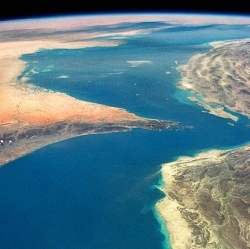
NASA unveiled its plan to protect Earth from a near-Earth object (NEO), outlining five goals, including enhanced detection and improved modeling. The 20-page plan, details steps the U.S. should take to be better prepared for objects such as asteroids and comets that come within 30 million miles of the planet.
“The nation already has significant scientific, technical and operation capabilities that are relevant to asteroid impact prevention,” said Lindley Johnson, NASA’s planetary defense officer, at NASA Headquarters, Washington in a statement.
Johnson added: “Implementing the National Near-Earth Object Preparedness Strategy and Action Plan will greatly increase our nation’s readiness and work with international partners to effectively respond should a new potential asteroid impact be detected.”
In addition to enhancing NEO detection, tracking and characterizing capabilities and improving modeling prediction, the plan also aims to develop technologies for deflecting NEOs, increasing international cooperation and establishing new NEO impact emergency procedures and action protocols.
On a conference call with the media, Aaron Miles, White House Office of Science and Technology Policy, Washington, stressed that no threat from an NEO is imminent. "NASA and partners have identified 95 percent of asteroids large enough to cause global catastrophe and none will pose a threat in this century," Miles said.
When asked where the funding for this would come from, Miles said that the plan comes largely from existing resources in the U.S. government, but it’s about utilizing those resources and monies in a smarter and more efficient way.
Johnson added that the budget for the entire planetary defense portion of NASA is $150 million per year.
Johnson also said that there are over 18,300 recorded NEOs and just over 8,000 of them are over 100 meters or larger.
In 2016, NASA opened a new office to track asteroids and comets that come too close to Earth, known as the Planetary Defense Coordination Office (PDCO). The PDCO formalizes the agency’s existing program for detecting and tracking NEOs, which NASA has been studying since the 1970s.
